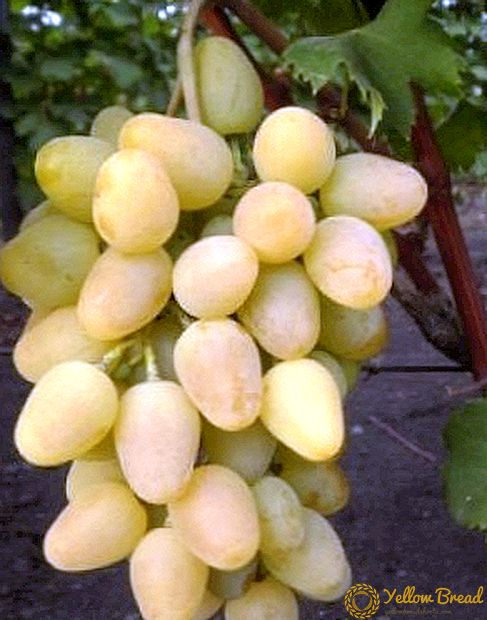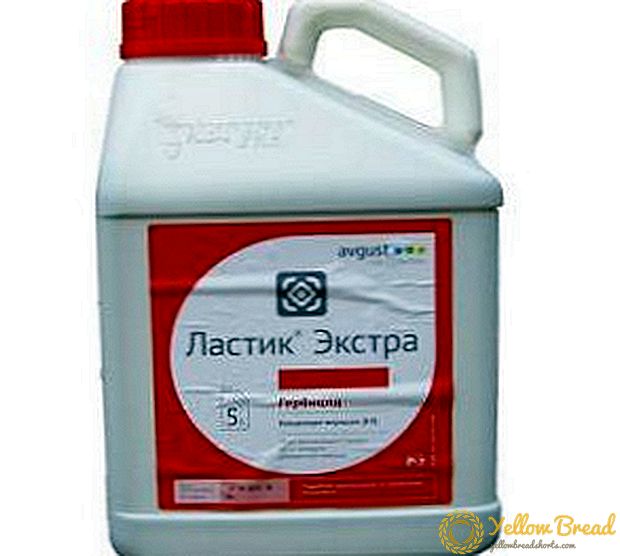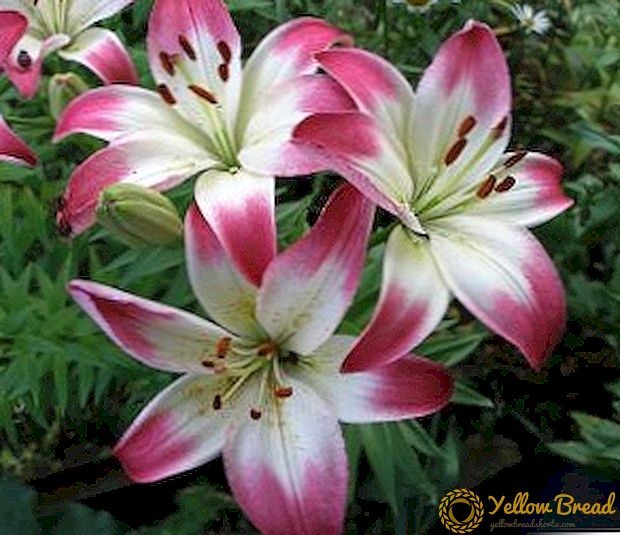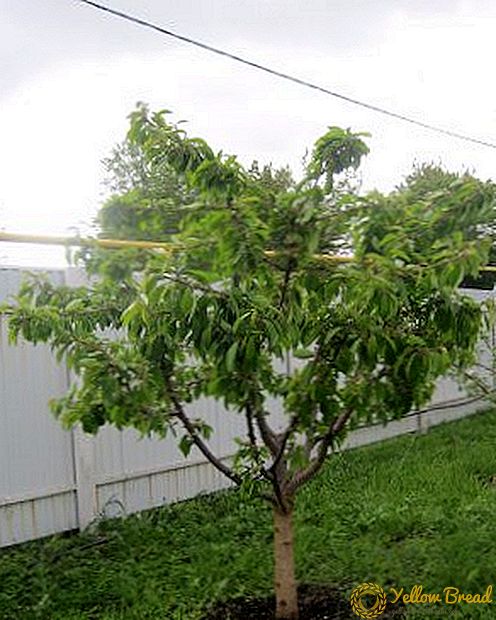 Sometimes you don't really want to buy cherries (bird cherries) at the bazaar, because nobody knows exactly where and under what conditions these fruits were grown. Therefore, many gardeners are looking for such varieties of cherries, which could give a good harvest in the Moscow region and other central and northwestern regions. Breeders took care of this, and relatively recently a new variety of this tree was bred - Fatezh cherry. Now the question of which varieties of bird cherry are best planted in the central and northern part of the country has disappeared by itself.
Sometimes you don't really want to buy cherries (bird cherries) at the bazaar, because nobody knows exactly where and under what conditions these fruits were grown. Therefore, many gardeners are looking for such varieties of cherries, which could give a good harvest in the Moscow region and other central and northwestern regions. Breeders took care of this, and relatively recently a new variety of this tree was bred - Fatezh cherry. Now the question of which varieties of bird cherry are best planted in the central and northern part of the country has disappeared by itself.
- Description of the tree and fruits
- Characteristic variety
- Where to plant a sweet cherry
- Location and lighting
- Soil for Fatezh variety
- Selection and planting seedlings
- How to choose a quality planting material
- Timing and landing scheme
- Proper care of cherries
- How to water
- Top dressing
- Regular pruning
- Diseases and pests
- The advantages and disadvantages of the variety
Description of the tree and fruits
The trees of this type of bird cherry are medium height, the maximum height reaches 4-5 meters. The crown of trees is moderately dense, spherical, sprawling. The branches that depart from the trunk, form with it a straight or obtuse angle (most often tilted to the ground).The shoots are thick and straight, brown or dark brown in color.
The leaves of "Fatezh" are large, with a light serration on the edges, have a light green color. On the bouquet branches often form flowers that are strictly white in color. 
The flesh of the fruit has a dense structure, light pink color, taste characteristics can be attributed to the dessert type. The fruits of "Fatezh" have a sweet-sour taste. Tasting assessment of berries on a five-point system - 4.7 points. Their bone is of medium size, the shape of a moderately flattened oval, rather easily separated from the pulp.
Characteristic variety
Sweet cherry "Fatezh" in 2001 was entered in the state register. A little earlier, it was bred by Russian breeder A. I. Evstratov specially for landing in the central and north-western regions of Russia.
This sort of bird cherry is distinguished by high productivity and precocity, which is what attracts many gardeners of the Moscow region.Based on the description of the Fatezh cherries, it can be argued that the tree begins to bear fruit 3-4 years after planting. Until the age of ten, when the sweet cherry is still growing and forming, you will be able to collect from 4 to 6 kg of fruits annually. From the age of ten, the number of fruits on one tree will increase to 30 kg. In the future, if you properly care for the plant, you can get up to 50 kg of crop per season per year. For large-scale industrial purposes, about 33 tons of fruits are harvested from one hectare of Fatezh trees.
From the age of ten, the number of fruits on one tree will increase to 30 kg. In the future, if you properly care for the plant, you can get up to 50 kg of crop per season per year. For large-scale industrial purposes, about 33 tons of fruits are harvested from one hectare of Fatezh trees.
The variety has a good level of winter hardiness (above average). Only young buds need to be sheltered from winter frosts, since the trunk and skeletal branches can withstand temperatures down to -30-35 ° С.
Breeders also took care of the high resistance of the variety to various diseases. Most varieties of bird cherry are susceptible to such fungal diseases as moniliosis and coccomycosis, but Fatezh cherries are highly resistant to these fungal microorganisms.
This sort of sweet cherry requires a variety of pollinator planted nearby. In its role can act: "Revna", "Iput", "Chermashnaya", "Krymskaya", etc.
Where to plant a sweet cherry
When choosing a place for planting cherries "Fatezh" you need to take into account many factors that will determine the further growth and fruiting of the tree.
Location and lighting
Carefully read the surface water map in your area. Sapling "Fatezh" should grow in the place where the groundwater level does not rise above two meters. Also, the plant should not be planted on the northern side of the site and in places where depressions are clearly expressed (water and cold air will often stagnate here in February-March). In addition, it is necessary to take into account the fact that this sort of bird cherry does not tolerate strong drafts, therefore, it should be planted in places protected from wind (near fences, house walls, etc.).
If your summer cottage is located along the old garden, park or forest, this will be a great place for the normal growth and development of the tree. As many experienced gardeners say, cherry plants are always better bearing fruit if they grew near forests or moderately dense and extensive gardens.
On your site you need to choose a southern place that is protected from the wind by a wall or fence. But be careful, because if you plant a tree close to the house, there is a risk of damage to the foundation by its roots. Therefore, the best option would be planting a sapling 3-4 meters from the wall of the house. 
Soil for Fatezh variety
For the Fatezh sweet cherry heavy soils, loams, peaty and excessively dense types of soil are unsuitable. The soil for the tree should be well water and breathable, light, preferably sandy. Place for planting should be well fertilized with lime, which is necessary for the plant for normal growth, as well as for bone formation during fruit ripening. The acidity of the soil should range from 6.0-7.5 pH.
Selection and planting seedlings
If you want your tree to bring a large and high-quality crop, you must choose a healthy planting material and plant it using the right technology.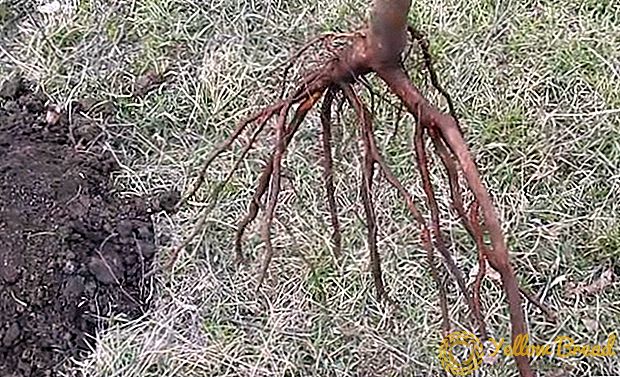
How to choose a quality planting material
When choosing a sapling of Fatezh cherries, first of all you need to look at the graft. The stock must easily withstand severe winter frosts or overmoistened soils (the stock is the lower part of the trunk, along with the root). The graft (the trunk and the entire upper part of the tree) must be clean, even and without any mechanical damage.
Also important is the fact that when you buy on the market you can easily be deceived and sell a "bad seedling" (not the sort of sweet cherry, or even a wild seedling). To avoid such unpleasant situations, it is better to buy saplings in nurseries with a good reputation. There they will not deceive you, since such organizations value their reputation. But there are exceptions in the form of the fact that sellers themselves are not fully sure whether their seedling will take root in the new conditions. In such cases, it is better to buy a tree in the fall, when in the nurseries a large selection of planting material.
Do not buy the largest seedling that has a lot of leaves and shoots, as it will take root badly at a permanent growth site. Choose annuals, and look carefully at the budding site (at a height of 5-15 cm from the root system, the trunk should be slightly bent). If this is not the case - with almost one hundred percent probability you can be sure that you want to sell a wild seedling.
The height of one-year-old seedlings should be 0.8-1 m, the length of the root system should be 0.2-0.25 cm. Planting material should have about 4-5 shoots, stem thickness - 2-2.5 cm.
Timing and landing scheme
Experienced experts say that in the northern and central regions of our country it is better to carry out spring planting of Fatezh sweet cherries, since severe frosts in wintertime can harm a young seedling. Residents of the southern region, where winter differs in milder climatic conditions, can plant young seedlings in the fall, 2-3 weeks before the onset of frost. However, today almost all fruit crops are grown in containers, so they can be planted at any time of the year, except for frosty winters.
Next to each of the pits need to install a special number for garters. The ground dug out of the holes must be mixed with three buckets of humus and a liter jar of wood ash. If you are going to plant a tree in loamy soil, add one bucket of sand (preferably a river) to this mixture. 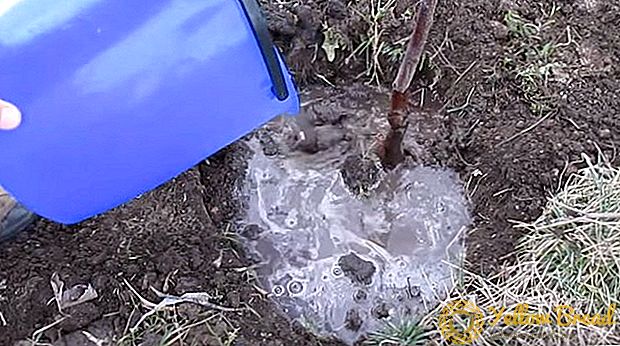 Does the level of groundwater in your area flow close to the surface? Do not worry, do at the bottom of the landing hole drainage. Construct it from stones or finely beaten bricks. The thickness of the drainage layer should vary from 4 to 7 cm.
Does the level of groundwater in your area flow close to the surface? Do not worry, do at the bottom of the landing hole drainage. Construct it from stones or finely beaten bricks. The thickness of the drainage layer should vary from 4 to 7 cm.
Pour a layer of earth (8-11 cm) over the drainage and insert a seedling into the hole. Carefully flatten the roots and make sure that the root neck is 3-4 cm above ground level. Pour the seedling in layers, gradually compacting the ground.At the end, leave a small hole for watering and pour 2-3 buckets of water there (slowly, so as not to blur the roots). When water is completely absorbed, the ground around the seedling needs to be mulched with humus, then tied to a previously installed stake.
Proper care of cherries
In order to annually receive a large number of high-quality crops, the plant must be properly and timely taken care of: water, fertilize, prune, etc.
How to water
Cherry "Fatezh", like other varieties of this plant, does not like excessively wet soils, but it does not tolerate excessive dryness. If the soil is over-moistened, or the tree is planted in places of constant high soil moisture, the trunk of the plant may rot and collapse. Therefore, correctly choosing a place to plant, you need to water the plant regularly (once every 7-10 days, but not more often).
Under each tree, you need to pour so much water so that the soil around the trunk remains constantly wet (but you don’t need to create puddles and pour too much water). In addition to regular watering, try to mulch the soil around the tree with a layer of straw, sawdust or shredded cardboard.Mulch soil retains moisture for much longer.
Watering should be carried out in a circle of a tree with a diameter of 2-3 meters. Mature plants need less moisture, so you can limit yourself to four waterings per month (in the morning and in the evening for a bucket of water for each plant). However, during the formation of the kidneys (end of May - the beginning of June) the tree needs more frequent watering, since the quantity and quality of the crop will depend on it.
Top dressing
Any types of sweet cherries, including Fatezh, need fertilizing twice a year. The amount of fertilizer will depend on the composition of the soil where the tree grows.
If your sweet cherry is planted on chernozem, then you need to feed it less, as the black soil already contains a lot of useful minerals. The plant on loamy soils should be fed in early spring and late autumn (at the beginning and at the end of the growing season). Excellent fertilizer will be: horse manure (humus), humus, compost, etc.
Loosening should be carried out regularly (at least once a month) - this way you will give the roots of trees the opportunity to "breathe".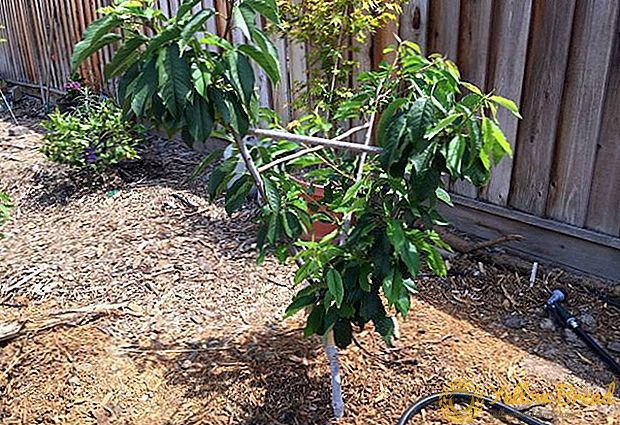 In the process of loosening, you need to remove all weeds and rotten roots, then evenly distribute 200 grams of urea around the trunk of a tree. In July and September, after loosening the soil, 100 g of potassium sulfate and 350 superphosphates are introduced. In late autumn, it is not necessary to feed the cherries with mineral fertilizers (only organic ones, before the onset of frost).
In the process of loosening, you need to remove all weeds and rotten roots, then evenly distribute 200 grams of urea around the trunk of a tree. In July and September, after loosening the soil, 100 g of potassium sulfate and 350 superphosphates are introduced. In late autumn, it is not necessary to feed the cherries with mineral fertilizers (only organic ones, before the onset of frost).
Regular pruning
If it is wrong to plant a sweet cherry, and in the future not to rejuvenate at all, the tree will grow huge, but it will produce little fruit. Moreover, the fruits will be small and have poor taste. In order for the tree to be easily pruned and sheltered for the winter, experienced gardeners recommend inoculating a seedling of artisanal wild-growing cherries.
Cherry can be cut at different times of the year; at the same time pruning is carried out using different technologies, and, accordingly, brings different results.
Spring pruning is carried out after the end of the night frosts, when the warm daytime temperature is established and all the snow leaves. Do not remove the tips of the branches with growth buds. The heavily dense crown is cut in tiers and leaves the side branches, which later will bear good fruit. 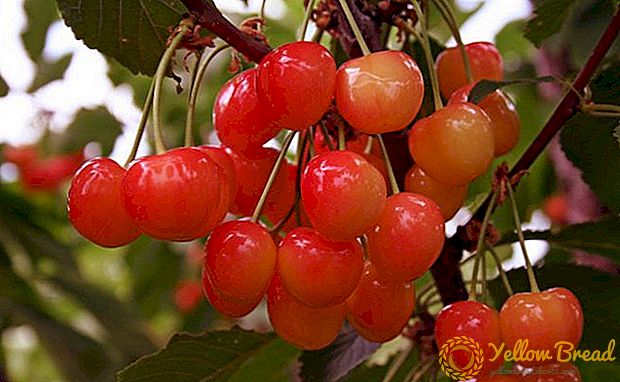 Summer pruning can be carried out if you believe that spring may adversely affect the quality of the fruit. In summer, the tree is pruned after harvesting using the same technology as in spring.
Summer pruning can be carried out if you believe that spring may adversely affect the quality of the fruit. In summer, the tree is pruned after harvesting using the same technology as in spring.
The crown needs to be cut in order for the optimum amount of sunlight to arrive in the middle. Old and tall trees are not cut off immediately. Ten-year cherries need to be rejuvenated in 2-3 approaches (in 2-3 years) in order to prevent the stem and root system from dying out.
The pruning process requires adherence to certain rules that should be followed by every gardener:
- pruning trees that have not yet reached the age of two is strictly prohibited;
- the first tier of the trunk should contain three branches: two adjacent and one higher by 15-20 cm;
- the second tier should consist of two branches, located 70 cm above the first tier;
- the third tier should consist of one branch, located 35-40 cm above the second tier;
- it is necessary to remove all shoots that are directed downwards or towards the center of the tree and hinder the growth of other shoots or branches;
- in the first 5 years of cherry growth shorten the shoots to 50 cm (sometimes you need less, but it is better not to leave more shoots);
- branches that are not the basis of the formed crown, you need to cut to 30 cm in length;
- After cutting, cover all cut points with paint or clay.
Diseases and pests
The main diseases of sweet cherry are moniliosis and coccomycosis, however, Fatezh is protected from these diseases at the genetic level. Sometimes, with improper watering or heavy and frequent rains, causing an increase in moisture in the soil, the tree can still succumb to the above diseases.
Among insects that infect a plant, the most common are: cherry fly, aphid, leaf-eating caterpillar, etc. In addition, thrushes and starlings, who also need adequate protection, love to eat sweet cherry fruits.
In order to prevent the appearance of aphids on the leaves, it is not necessary to over-feed the plant with nitrogenous fertilizers. If aphid still appeared on your sweet cherry, insects need to be carefully collected and destroyed.
To combat cherry fly, which puts offspring in the fruits of sweet cherry (as a result of which wormy berries appear), the tree should be sprayed with "Decis" (only after flowering) according to the instructions for use. To prevent the appearance of worms in the fruit, you need every autumn to dig the soil around the tree.  Sometimes the leaves of the cherry can affect the moth caterpillar. To fight it you need the same methods that are used to combat the cherry fly.
Sometimes the leaves of the cherry can affect the moth caterpillar. To fight it you need the same methods that are used to combat the cherry fly.
It also happens that the cherry tree affects the blast. The first sign of such a lesion is leaky leaves (but no small insects are observed on them). The fight against phantom with the help of chemicals is not provided, so you need to collect all the affected leaves and burn them.
If your plant still hit coccomycosis (small dots are formed on the leaves), then it must be immediately processed with Horus. Next year, before the plant blooms, the treatment must be repeated.
Moniliosis (fruits rot before the time) is fought with the help of the same “Horus” (spraying the tree according to the instructions). To prevent the emergence of coccomycosis and moniliosis, sweet cherries should be planted away from old cherries and cherries. In addition, carefully monitor the soil moisture.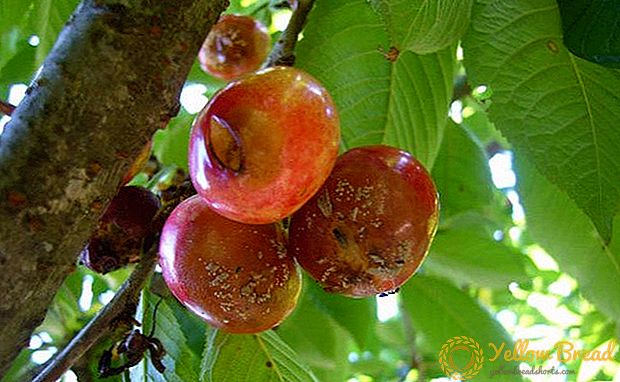 To fight with blackbirds and starlings need mechanical methods. You can cover the trees special garden net. Some gardeners use homemade "scarers". They are made of plastic bottles, put on a branch so that the wind can scroll through them and create a frightening sound. In addition, you can make a special scarecrow of clothing, which is equipped with bells. It hangs on the top of the crown, and when a thrush or starling sits on a branch, the bells ring and scare the birds.
To fight with blackbirds and starlings need mechanical methods. You can cover the trees special garden net. Some gardeners use homemade "scarers". They are made of plastic bottles, put on a branch so that the wind can scroll through them and create a frightening sound. In addition, you can make a special scarecrow of clothing, which is equipped with bells. It hangs on the top of the crown, and when a thrush or starling sits on a branch, the bells ring and scare the birds.
The advantages and disadvantages of the variety
The main advantages of Fatezh sweet cherry are:
- high winter hardiness of woody branches (up to -35 ° C) and flower buds (up to -28 ° C);
- the average height of the trees, which is convenient when pruning and gathering fruits;
- no sharp forks on the crown;
- resistance to moniliosis and coccomycosis;
- high yield and excellent taste of the fruit.
From this article we can conclude: Fatezh cherry is almost an ideal fruit tree for the northern and central regions of Russia. For over a decade, gardeners have been harvesting a great crop and advising planting Fatezh to their acquaintances. Try it and you, with proper care, high-quality harvest will not take long to wait.

